A Short-spouted Jar with Jet-black Glaze from Small Kilns in Shanxi, Dating from the Southern Song Dynasty to the Early Ming Dynasty | A Classic Heirloom of Northern Folk Black-glazed Ceramics from the Song Dynasty
[Collection Introduction]
This is a short-spouted jar with jet-black glaze, fired in folk kilns in the Shanxi region from the Southern Song Dynasty to the Early Ming Dynasty. It is a representative practical vessel in the northern black-glazed porcelain system. With a plump and simple shape and a jet-black, shiny, and moist glaze, it exudes a strong flavor of folk life and reflects the craftsmanship characteristics of the era. It is a precious physical material for studying the development of folk ceramics in the northern region during the Song and Ming dynasties, and also a classic example of the “beauty of simplicity” in Oriental antique collections.
[Historical Background]
The Song Dynasty was a heyday in the history of Chinese ceramics. The northern region was famous for its black-glazed porcelain. As an important ceramic production area at that time, Shanxi was dotted with numerous folk kilns (commonly known as “small kilns”), which mainly fired practical utensils. The jet-black glaze got its name because its color is as dark as lacquer and its luster is like a mirror. It was popular from the Song and Jin Dynasties to the Early Ming Dynasty and was commonly used for water storage, wine holding, or as stationery. As a typical product of the small kilns in Shanxi, this jar embodies the aesthetic concept of “emphasizing practicality and devaluing elaborate decoration” in northern folk ceramics and witnesses the civilian development of ancient handicrafts.
[Craftsmanship Features]
1. Jet-black Glaze Firing Technique
Traditional mineral glazes are used in the preparation. The glaze with a relatively high iron content is fired in a reducing flame, resulting in a pure and dark glaze surface. Local areas form natural luster layers due to the flow of the glaze. The glaze is applied evenly, with the glaze layer gradually thickening from the mouth to the abdomen. At the foot of the jar, the glaze naturally drips, revealing the light gray body, which reflects the economical feature of “glaze not reaching the bottom” in folk kilns.
2. Hand-thrown and Shaped
The jar has a small mouth, plump shoulders, a bulging abdomen, and a flat bottom. It is entirely hand-thrown. Fine wheel-thrown spiral patterns can be seen on the abdomen. A short spout extends from one side of the shoulder, with the spout opening slightly flaring outwards, facilitating pouring. The overall shape is plump and stable, with smooth and round lines and no excessive decoration, presenting the folk aesthetic of “beauty in shape”.
3. Body and Firing
The body is firm, with a light gray or gray-brown color and a slightly coarse texture, mixed with small sand particles, which is in line with the characteristic of using local materials in the small kilns in Shanxi. The foot of the jar is unglazed, showing obvious flint red and traces of wear and tear, which are evidence of natural aging after long-term inheritance.
[Detail Description]
-
Shape: The overall height is approximately [to be measured, and the proportion can be described here], the mouth diameter is about [to be measured], the maximum abdominal diameter is about [to be measured], and the length of the short spout is about [to be measured]. It has a small mouth with a converging lip, a slightly constricted neck, plump shoulders gradually tapering down to a flat bottom. The overall proportion is harmonious, ensuring good stability.
-
Glaze Surface: The jet-black glaze is shiny and moist. Due to its long history, a gentle patina has formed in some areas. Fine cracks and needle-like glaze shrinkage points (a common phenomenon in folk kilns) can be seen on the glaze surface. Near the spout on the shoulder, the glaze color is slightly lighter, presenting a dark brown color, which is caused by uneven temperature during firing and belongs to natural kiln transformation.
-
Condition: The overall condition is well-preserved, with no obvious impact cracks. There are slight wear marks on parts of the body (such as the mouth and abdomen). The edge of the short spout shows some wear of the old body. There is a small area of glaze peeling at the edge of the foot, all of which are natural aging traces during the inheritance process and do not represent post – production damage.
[Collectible Value]
-
Historical Evidence: The number of jet-black glazed vessels from the small kilns in Shanxi dating from the Southern Song Dynasty to the Early Ming Dynasty is limited, and intact ones are particularly rare. This jar provides intuitive physical materials for studying the folk ceramic craftsmanship and utensil culture in the northern region.
-
Unique Aesthetic: Different from the exquisite and magnificent official kiln porcelain, this jar showcases the vitality of Chinese folk art with its “simplicity revealing the truth” design and embodies the Oriental aesthetic concept of “natural beauty”.
-
Market Scarcity: In recent years, the black-glazed porcelain from the northern folk kilns of the Song Dynasty has attracted much attention in the international collecting circle. The products from the small kilns in Shanxi, with their distinct regional characteristics, have become an important category for supplementing the collecting system.
[Collection Condition and Precautions]
-
This is an ancient heirloom. All aging traces (wear, glaze shrinkage, cracks, etc.) are normal phenomena and do not affect its historical and collectible value.
-
Ceramics are fragile. Please avoid strong vibrations. It is recommended to store it in a dry, dark, and thermostatic environment and avoid direct contact with chemical cleaners.
-
After purchase, professional shockproof packaging will be provided to ensure safe transportation.
[Why Choose This Item]
This short-spouted jar with jet-black glaze is not just an antique but also a living piece of history. It witnessed the daily life in the folk of Shanxi during the Song and Ming dynasties. Now, crossing time and space, it has become an artistic medium connecting Eastern and Western cultures. Whether you are a seasoned collector looking to complete your northern black-glazed porcelain collection or a new collector starting your journey into Oriental antiques, this jar is an ideal choice that combines historical significance and aesthetic value.
VirtuCasa is committed to ensuring the authenticity and reliability of every collection, allowing these witnesses of millennia – old civilizations to shine anew in your collection.
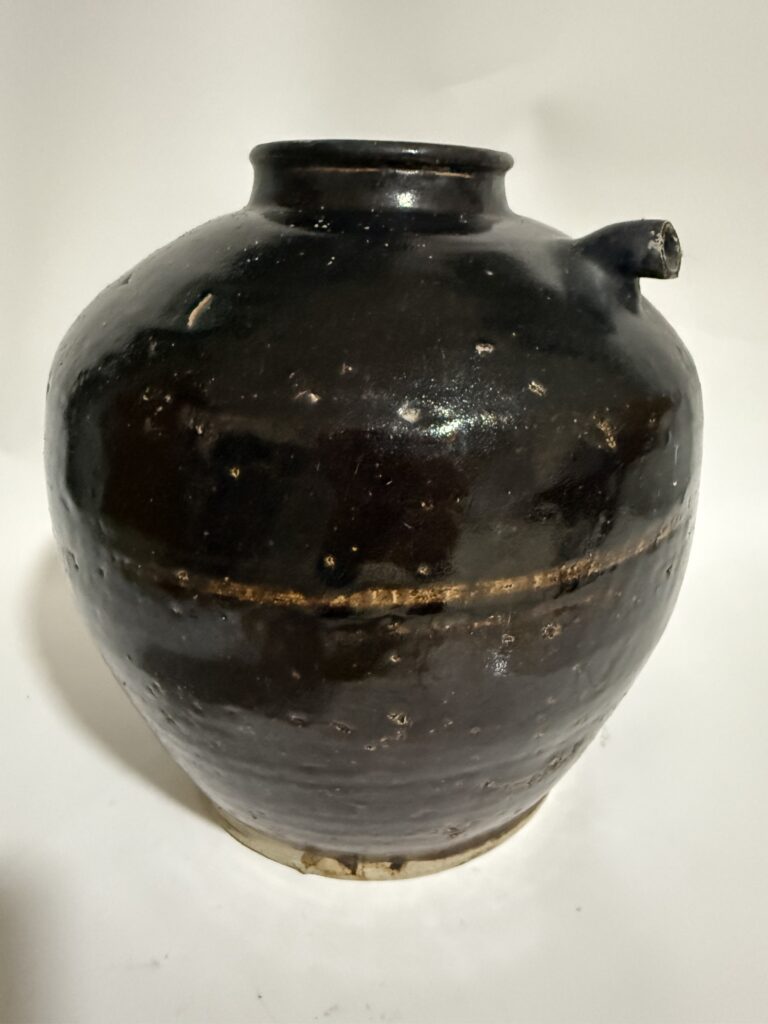
南宋至明初 山西小窑 烏金釉短嘴罐 | 宋代北方民窯經典黑釉傳世品
【藏品簡介】
本品為南宋至明初時期山西地區民窯燒制的烏金釉短嘴罐,屬北方黑釉瓷體系中具代表性的實用器皿。器型飽滿樸拙,釉色烏黑瑩潤,帶有濃郁的民間生活氣息與時代工藝特徵,是研究宋明時期北方地區民間陶瓷發展的珍貴實物資料,亦是東方古董收藏中體現「樸素之美」的經典範例。
【歷史背景】
宋代是中國陶瓷史上的鼎盛時期,北方地區以黑釉瓷聞名,山西作為當時陶瓷產業的重要產地,民間窯口(俗稱「小窯」)遍布,以燒制實用器皿為主。烏金釉因釉色濃黑如漆、光澤似鏡而得名,盛行於宋金至明初,常見於儲水、盛酒或文房用具。本品作為山西小窯的典型產品,承載了北方民間陶瓷「重實用、輕華飾」的審美理念,見證了古代手工業的平民化發展。
【工藝特點】
1. 烏金釉燒制技藝
採用傳統礦物釉料配製,鐵含量較高的釉料在還原焰中燒成,釉面濃黑純正,局部因釉料流動形成自然的光澤層次。施釉均勻,從口沿至腹部釉層逐漸加厚,底足處釉汁自然垂流,露出淺灰色胎體,體現民窯「釉不及底」的節約特徵。
2. 手工拉坯與塑形
器型為小口、豐肩、鼓腹、平底,整體由手工拉坯成型,腹部可見細密的輪制旋紋,肩部一側延伸短流(嘴),流口略外撇,便於傾倒。造型飽滿穩重,線條圓潤,無過多裝飾,展現「以型為美」的民間審美。
3. 胎質與燒制
胎體堅實,胎色呈淺灰或灰褐色,質地略粗,夾雜細小砂顆粒,符合山西小窯就地取材的特點。底足無釉,可見明顯的火石紅與使用磨損痕跡,為長期傳世的自然老化證據。
【細節描述】
-
器型:通高約 [需實測,此處可描述比例],口徑約 [需實測],腹徑最大處約 [需實測],短流長約 [需實測]。小口斂唇,頸部略束,豐肩向下緩收至平底,整體比例協調,穩定性佳。
-
釉面:烏黑釉色瑩潤光亮,局部因年代久遠形成溫潤包漿,釉面可見細小開片及針狀縮釉點(民窯常見現象),肩部近流處釉色略淺,呈暗褐色,為燒制時溫度不均所致,屬自然窑變。
-
品相:整體保存完好,無明顯衝擊裂痕。器身局部有輕微磨損(如口沿、腹部),短流口沿略見老胎質磨損,底足邊緣有小範圍剝釉,均為傳世過程中的自然老化痕跡,非後天損傷。
【收藏價值】
-
時代證物:南宋至明初山西小窯烏金釉器物存世量有限,完整器尤為難得,本品為研究北方民間陶瓷工藝、器用文化提供了直觀實物。
-
審美獨特性:不同於官窯的精緻華麗,本品以「樸素見真」的設計,展現中國民間藝術的生命力,是東方「自然美」審美觀的體現。
-
市場稀缺性:近年來宋代北方民窯黑釉瓷備受國際收藏界關注,山西小窯產品因地域特色鮮明,成為補充收藏體系的重要品類。
【藏品狀況與注意事項】
-
本品為古代傳世品,所有老化痕跡(磨損、縮釉、開片等)均屬正常現象,不影響其歷史與收藏價值。
-
陶瓷易碎,請避免劇烈震動,建議置於乾燥、避光、恆溫環境中保存,避免直接接觸化學清潔劑。
-
購買後將提供專業防震包裝,確保運輸安全。
【為何選擇本品】
這件烏金釉短嘴罐,不僅是一件古董,更是一段流動的歷史——它曾見證宋明時期山西民間的生活日常,如今跨越時空,成為連接東西方文化的藝術媒介。無論是資深收藏家完善北方黑釉瓷體系,還是新藏家開啟東方古董之旅,本品都是兼具歷史意義與審美價值的理想之選。
VirtuCasa 堅持每一件藏品真實可靠,讓千年文明的見證者,在您的收藏中煥發新生。

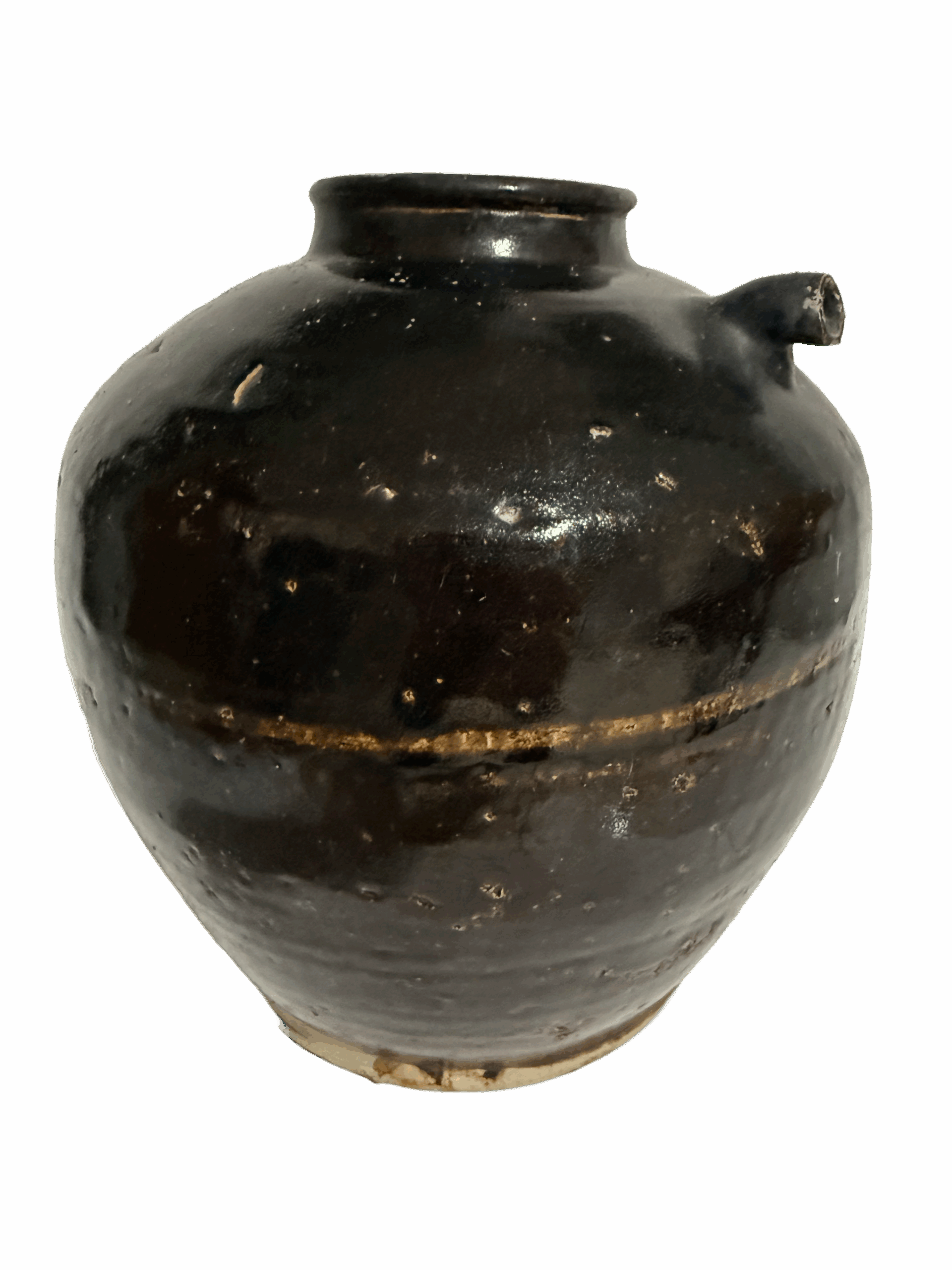
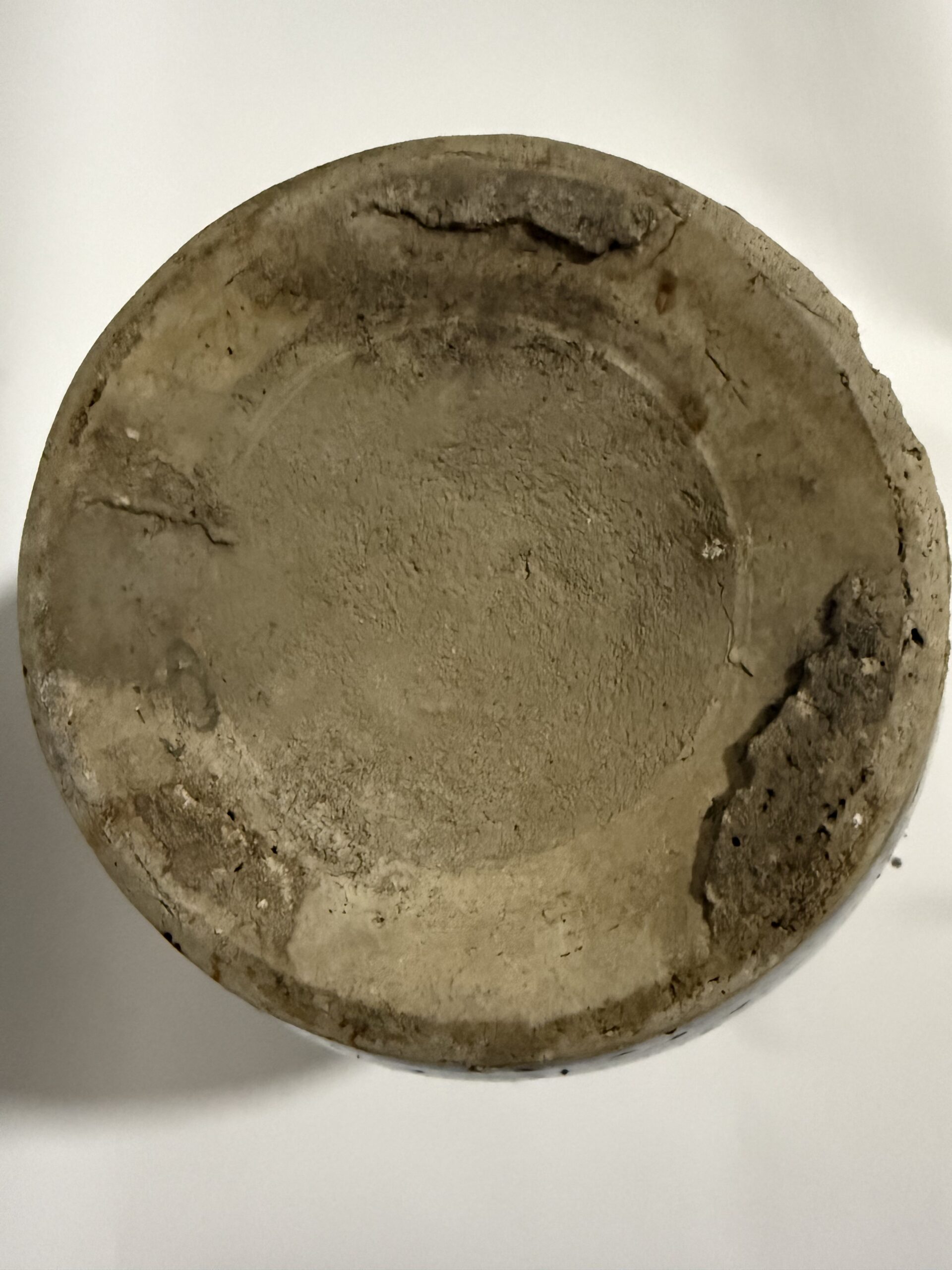
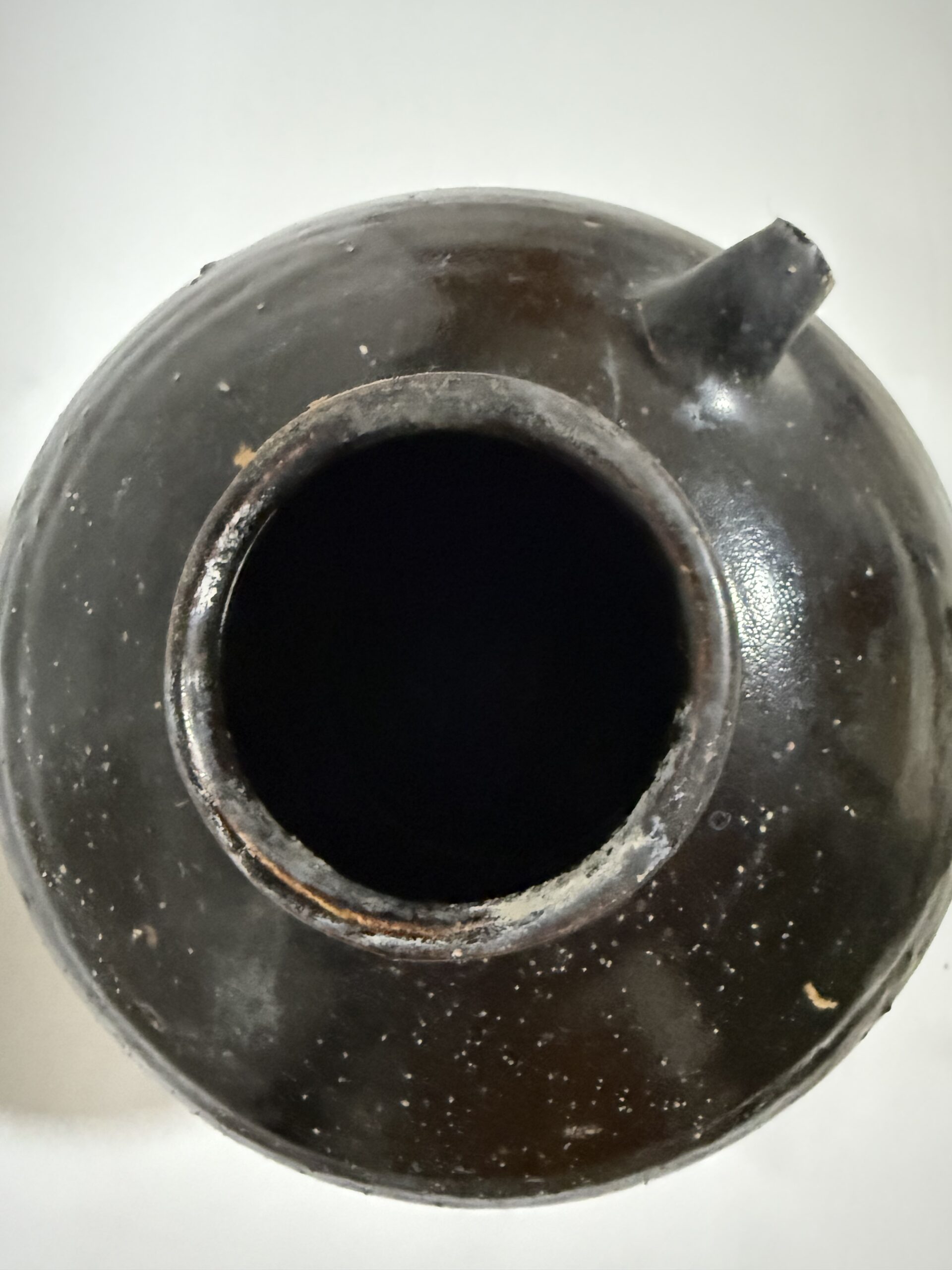
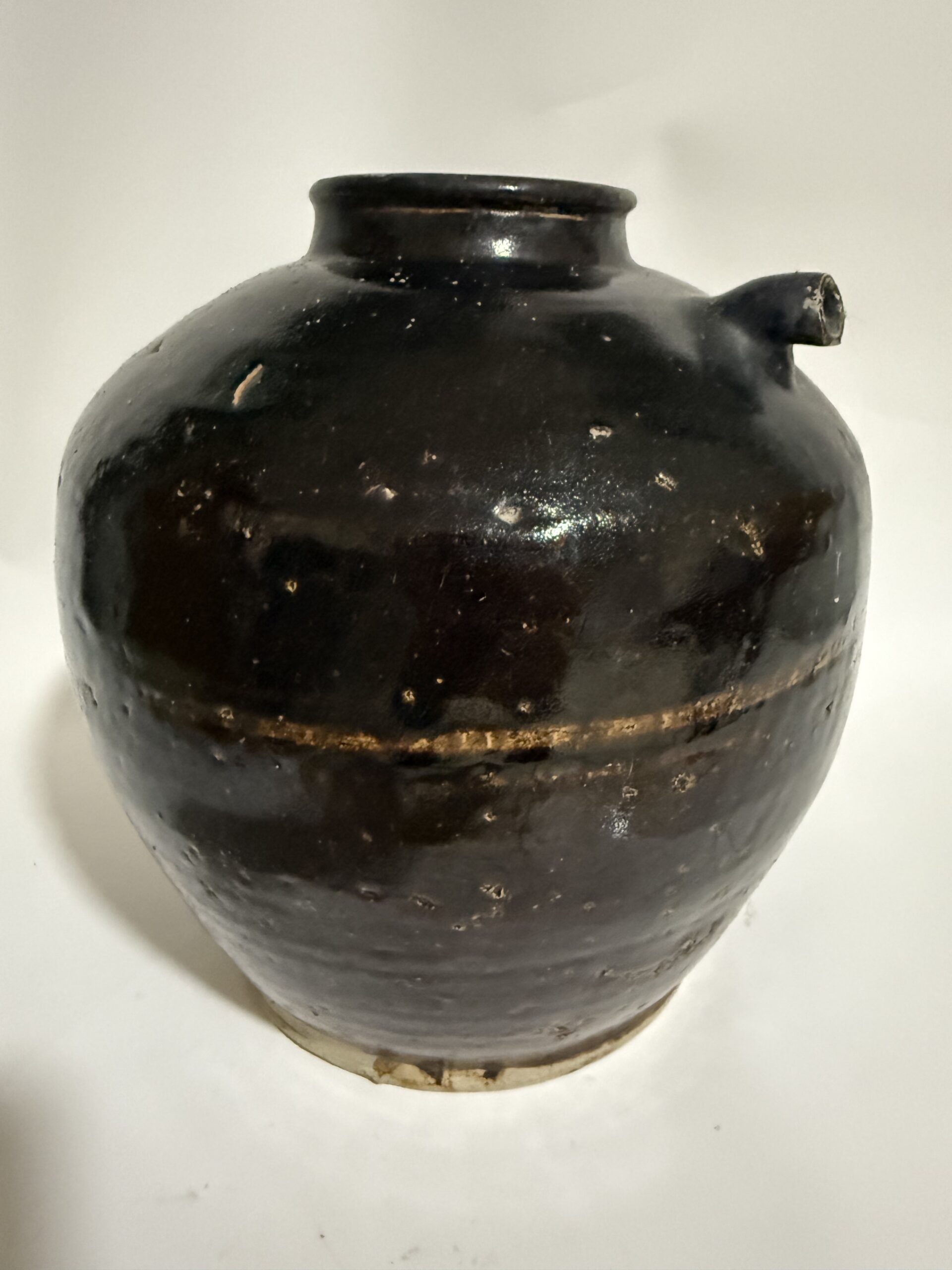

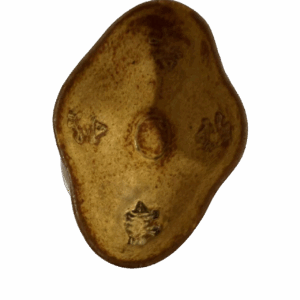
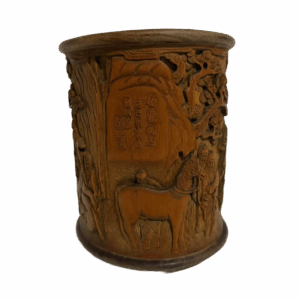
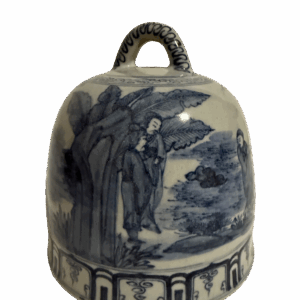
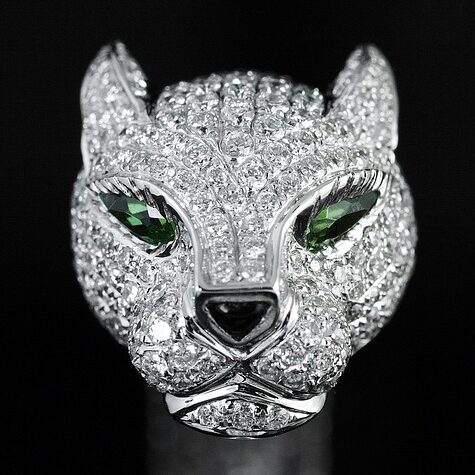
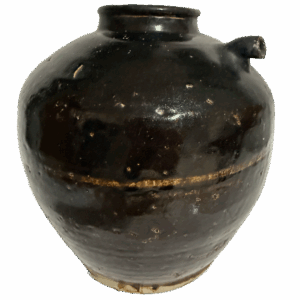
Reviews
There are no reviews yet.